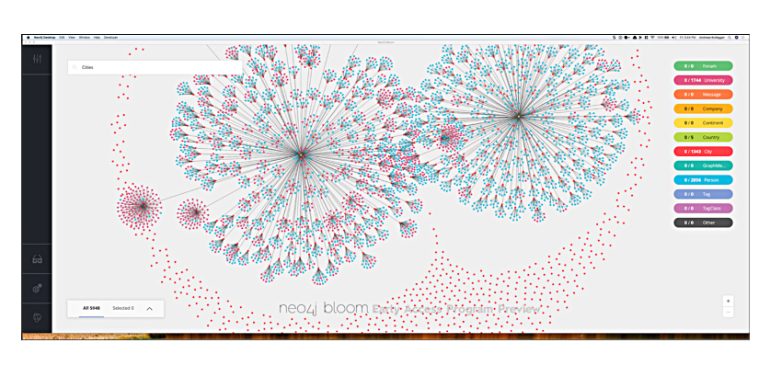- Neo4j integrates its graph database and analytics with Snowflake’s AI Data Cloud.
- Graph technologies projected to drive 80% of data and analytics innovations by 2025.
- Neo4j’s graph data science enables uncovering hidden relationships across vast data sets.
- Snowflake integration allows instant execution of over 65 graph algorithms.
- Users can address critical questions and build knowledge graphs seamlessly.
- Applications include anomaly detection, fraud prevention, supply chain optimization, and more.
- Snowflake SQL users benefit from faster project deployment and more precise business insights.
- Alliance simplifies graph capabilities utilization through familiar SQL programming language.
- Pay-as-you-go model ensures efficient resource allocation and cost optimization.
- Integration set to be available for general access later this year on Snowflake Marketplace.
- Snowflake reports a significant rise in GenAI data analysis within its cloud data warehouses.
Main AI News:
Neo4j, a prominent player in graph database and analytics, has seamlessly integrated its product into the Snowflake AI Data Cloud. A graph database, distinguished by its emphasis on relationships among data entities, stores nodes and relationships instead of traditional tables or documents.
According to Gartner, by 2025, graph technologies are projected to underpin 80 percent of “data and analytics innovations,” a significant leap from just 10 percent in 2021.
Neo4j touts its graph data science as an analytics and machine learning (ML) solution capable of uncovering hidden relationships across vast data sets, thereby enhancing predictions and revealing novel insights. Among its clientele are renowned names like NASA, Comcast, Adobe, Cisco, and Novartis.
The integration with Snowflake empowers users to leverage over 65 graph algorithms instantly, eliminating the need to migrate data from their Snowflake environment. Neo4j’s library of graph algorithms and ML models facilitates addressing crucial questions such as “what’s significant,” “what’s unusual,” and “what’s next.” By constructing knowledge graphs, users can capture entity relationships, anchoring large language models (LLMs) in factual information, thus enhancing their reasoning, inference, and retrieval capabilities.
These algorithms find utility in diverse scenarios ranging from anomaly detection and fraud prevention to supply chain optimization and enhancing customer service. Snowflake SQL users stand to benefit from expedited project deployment, accelerated time-to-value, and more precise business insights, enhancing decision-making processes.
The alliance enables users to harness graph capabilities through familiar SQL programming language, thus reducing complexity and learning curves for AI/ML, predictive analytics, and GenAI applications.
Customers are billed based on usage, with ephemeral graph data science environments seamlessly created from Snowflake SQL. This pay-as-you-go model ensures efficient resource allocation and cost optimization. Moreover, graph analysis results seamlessly integrate within Snowflake, facilitating interaction with other data warehouse tables.
Greg Steck, VP of Consumer Analytics at Texas Capital Bank, lauds the integration, citing its potential to accelerate data applications and bolster long-term customer success.
Jeff Hollan, Head of Applications and Developer Platform at Snowflake, sees the integration as a game-changer, enabling organizations to extract deeper insights and drive innovation at an unprecedented pace.
Sudhir Hasbe, Chief Product Officer at Neo4j, underscores the transformative potential of combining Neo4j’s graph analytics with Snowflake’s scalability and performance.
These new capabilities are currently available for preview and early access, with general availability slated for later this year on the Snowflake Marketplace.
Snowflake has reported a significant surge in GenAI data analysis within its cloud data warehouses earlier this year.
Conclusion:
The seamless integration of Neo4j’s graph analytics with Snowflake’s AI Data Cloud heralds a new era of synergy, offering organizations unparalleled insights and innovation opportunities. This convergence not only accelerates data-driven decision-making but also simplifies complex analytics processes, reshaping the landscape for AI, ML, and predictive analytics applications in the market.

